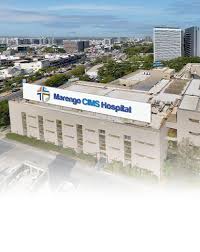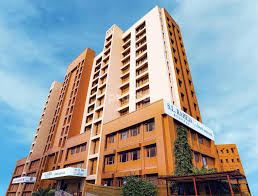Vascular Surgery
Hickmann Catheter Removal
Hickmann Catheter Removal
Hickmann Catheter Removal is a minor surgical procedure to take out a tunneled central line after treatment or when complications arise, performed under local anesthesia with quick recovery.
Hickman catheter removal procedure
A Hickman catheter is a tunneled central venous catheter, which is implanted through the skin into a large vein (typically long term IV medications, chemotherapy, or parenteral nutrition). Once unnecessary, or in case of infection or obstruction, it should be removed in a safe manner by a qualified medical expert (mostly a surgeon or interventional radiologist).
Preparation
Evaluation
- Doctor evaluates the cause of removal (therapy completion, infection, malfunction, and so on).
- Blood test can be conducted in case of suspicion of infection.
- The blood clotting profile of a patient (INR/PTT) can be ordered to avoid bleeding.
Patient Preparation
- The operation is normally carried out under local anaesthesia (desensitizing the skin).
- Sedation or general anaesthesia can be resorted to in certain children or nervous patients.
- The patient is flat on the procedure table with exposed and sterilized catheter site.
Step-by-Step Removal Procedure
Step 1: Aseptic Preparation
- Antiseptic (chlorhexidine or povidone-iodine) is used to clean the surrounding of the insertion location.
- Sterile drapes are placed.
Step 2: Local Anaesthesia
- Around the exit site and the tunnel tract, Lidocaine is injected to numb the area.
Step 3: Dissection and Release
- The small cuff which attaches the catheter to subcutaneous tissue (to avoid infection and migration) is meticulously cut with the scalpel or blunt dissection in order to avoid infection.
- The cuff is also freed by the opening of the tunnel without much force on the fibrous tissue surrounding the cuff.
Step 4: Catheter Withdrawal
- The catheter is gradually and consistently removed with little force at the venous entrance point to reduce the bleeding and air infiltration.
- It presumes that the operator will not have any resistance (in case of resistance, imaging or surgical assistance may be necessary).
Step 5: Hemostasis
- After the removal of the catheter, the venous entry site is mechanically pressed to prevent bleeding in 510 minutes.
- In order to avoid air embolism or infection, sterile occlusive dressing (airtight dressing) is used.
Aftercare and Recovery
Immediately After Removal
- The patient is monitored with bleeding, swelling, or embolism of the air (pneumatic pain, chest pains).
- Dressing should be dry and undamaged within a period of 24-48 hours.
At Home
- It is not necessary to be active or wet that area in 48 hours.
Watch for:
- Presence of erythema or edema at the location.
- Drainage or pus
- Fever or chills
- Persistent bleeding
- In case they happen, call the doctor.
Healing Time
- The puncture wound takes a normal duration of 3-7 days to heal.
- The scar tissue in the sites of the tunnels may take longer to heal.
Hickman line removal complications
The following is an extensive list of the Hickman catheter removal risks by type and severity.
Minor Complications
These are mild and short-lived:
Bleeding or Hematoma
- Cause: Little blood vessel damage during the withdrawal of the catheter or insufficient pressure after the withdrawal.
- Symptoms: Mild oozing, swelling or bruising of the site.
- Management: Use hard pressure and sterile dressing; hardly ever needs any additional treatment.
Pain or Discomfort
- Reason: Local irritation or dissection of the tissue around the cuff.
- Symptoms: Minimal soreness or tenderness at site of removal within 1-2 days.
- Treatment Management: Oral pain killers (as recommended); warm compress can be used after 24 hours.
Local Skin Irritation
- Etiology: Response to antiseptics or adhesive dressing.
- Treatment: Maintain a clean and dry area; apply hypoallergenic dressing when necessary.
Moderate Complications
Need to be monitored or medically attended to:
Infection
- Reason: Bacteria getting in via the exit site or via remnant tunnel infection.
- Symptoms: Redness, heat, discharge of pus, swelling, fever, or chills.
- Treatment: Culture of the wound and antibiotics; occasionally, surgical drainage in case of the formation of the abscess.
Retained Catheter Fragment
- Reason: The catheter is broken or torn at the time of removal (particularly fibrosed or aged).
- Symptoms: Recurring pain, swelling, or if seen under the skin, disintegration.
- Management: Surgical or interventional radiology is needed as imaging guidance.
Prolonged Bleeding
- Reason: Ineffective clotting (e.g. as a result of anticoagulants or liver disease).
- Symptoms: Persistent hemorrhaging after 1015 minutes of removal.
- Treatment: Compression, coagulation profile, medical treatment in case of persistent.
Life-threatening yet Uncommon Complications
Rare, though possibly life threatening:
Air Embolism
- Cause: Air gets into the venous system in case it is exposed to air during or soon after removal.
- Symptoms: Shortness of breath, chest pains, dizziness or fainting.
Prevention:
- Removal in the trendelenburg position of the patient.
- Immediately followed by occlusive dressing.
- Treatment: 100 per cent oxygen administration, left lateral decubitus positioning, and hospitalization.
Venous Thrombosis (Clot Formation)
- Reason: The development of a clot in the central vein of insertion of the catheter.
- Symptoms: pain, tightness, or swelling in neck, face or arm.
- Diagnosis: Ultrasound or venography.
- Treatment: Prescribed anticoagulation treatment.
Damage to Nearby Structures
- Symptom: Dissection of veins, arteries or tissue causes accidental injury.
- Symptoms: Pain, hematoma, swelling and or abnormal bleeding.
- Management: This is generally uncommon; it can require a surgical examination in case it is severe.
Delayed or Late Complications
May come days to weeks following removal:
- Infection or abscess of the tunnel site (unless the tunnel is fully healed)
- Unremitting sinus tract or drainage of the former exit site.
- The formation of scars or slight fibrotic lumps at the tunneling sites (cosmetic only issue)
Hickman catheter removal recovery time
The following is a clear account of the Hickman catheter removal recovery time and the process that is expected during the recovery process:
Acute Recovery (0-2 hours post removal)
- Light pain, minimal drainage, or aching of the area of removal. To prevent air entry or bleeding, pressure dressing is put on. Brief observation of patient, complications (bleeding, dizziness, air embolism).
Short-Term Healing (1–3 days)
- Light bruising or soreness can be continued. Dressing must not be wet or torn. Do not move, bend or lift with the arm of the side.
Intermediate Recovery (3–7 days)
- During the period, there is a normal healing of the skin entry site. The level of discomfort is lowered. You can also take off or replace dressing as it is recommended. When the wound is dry and closed showering is permitted.
Full Healing (7–14 days)
- The catheter was anchored in the tunnel under the skin which heals. Any remaining lump or slight hardness in the site tends to fade away. Normal lives may be adopted completely.
Factors Affecting Hickman catheter removal cost India
The following are the major cost-factors which influence the Hickman catheter removal cost India:
Character and nature of the process
- In case the catheter is relatively simple (there is no significant adhesion, infection, no imaging required), it can be removed in an easier and less expensive way.
- In the event that the catheter is old and long-standing, implanted, or infected, or requires imaging/fluoroscopy or operating theatre, the cost increases. Just like with similar equipment (eg PICC lines) the complexity increases the cost.
- In case of any extra work in the surgery (like removal of cuff, handling of complications) then it is extra money.
Type of hospital / facilities and location
- At a large, privately owned multi-specialty hospital in a metro area their charges (bed-rent, profession fees, and facility overheads) will tend to be higher than those of a smaller hospital or non-metro area.
- Regional differences: such cities as Delhi NCR, Mumbai, Chennai tend to get a higher than usual price.
Pre- and post-procedure care, investigations & consumables
- Pre-removal test (blood work, coagulation profile, imaging, when necessary) costs.
- Sterile dressing, anaesthetic/local anaesthesia (where necessary), dressings, antiseptic, sterile kits.
- Follow up care (to check bleeding, infection, air embolism etc) is an additional cost.
- In case the patient needs to spend the night or get special attention (ICU or high-dependency bed), this will increase the expense.
Status of patient and risk profile
- In case the patient belongs to comorbidities (bleeding disorders, risk of infections, obesity, and problematic anatomy) it can be removed slower or more resource-intensive → higher cost.
- When the removal of a catheter is performed due to a complication (infection, thrombosis, embedded catheter) and not the routine one, there would be supplementary fees.
Time catheter remained in place and any complications
- Prolonged dwell time typically results in increased fibrous tissue, increased removal difficulty, thus increased cost. Certain sources state that dwell time of related devices affect the complexity of removal.
- In case a complication has already occurred (eg: catheter related infection, deep thrombosis) the cost of removing it can also represent treatment of these complications as well or prolongation of the procedure.
Imaging/guidance requirements
- Applications of fluoroscopy, ultrasound, interventional radiology are an added cost. As an example, an image-guided permacath removal is reported to be more expensive in the higher cost range.
- In case it can be performed bedside with local anaesthesia vs in the OR with sedation or general anaesthesia -there is a huge difference.
Conclusion
Hickman catheter removal is a relatively safe and simple process when it is done by an accredited medical professional, and it is conducted in a sterile environment. The patients get well soon, and only light soreness or bruising helped to overcome the illness in several days. Nevertheless, as in the case with any central venous access, there are some risks which may arise, including bleeding, infection or, in some exceptional cases, air embolism. These may be prevented by proper technique, close follow-up and implementation of post-removal care protocols. Under proper medical care and post care, full recovery normally takes between 1 to 2 weeks and a majority of patients are free to resume back to normal activities within few days.
Hickmann Catheter Removal in India with GetWellGo
GetWellGo is regarded as a leading supplier of healthcare services. We help our foreign clients choose the best treatment locations that suit their needs both financially and medically.
We offer:
- Complete transparency
- Fair costs.
- 24 hour availability.
- Medical E-visas
- Online consultation from recognized Indian experts.
- Assistance in selecting India's top hospitals for Hickmann Catheter Removal treatment.
- Expert surgeon with a strong track record of success
- Assistance during and after the course of treatment.
- Language Support
- Travel and Accommodation Services
- Case manager assigned to every patient to provide seamless support in and out of the hospital like appointment booking
- Local SIM Cards
- Currency Exchange
- Arranging Patient’s local food
FAQ
What is the time of removal of a Hickman catheter?
- Its actual removal time is approximately 15 to 30 minutes based on the length of time the catheter was in position and the presence of scar tissue around the cuff.
Is hospital admission required for removal?
- Majority of the Hickman catheters are removed outpatient or day-care. It does not require admission except in the case of complications or infections.
What is the duration of the healing process following removal?
- Healing begins in 3-7 days and the full healing of the tissue normally takes 1-2 weeks. Light exercise can be resumed in 24-48 hours.
Can the catheter be reused or reinserted?
- No, a removed Hickman catheter may not be reused. In case of a long-term IV access, the new catheter may be placed at a new location.
TREATMENT-RELATED QUESTIONS
GetWellGo will provide you end-to-end guidance and assistance and that will include finding relevant and the best doctors for you in India.
A relationship manager from GetWellGo will be assigned to you who will prepare your case, share with multiple doctors and hospitals and get back to you with a treatment plan, cost of treatment and other useful information. The relationship manager will take care of all details related to your visit and successful return & recovery.
Yes, if you wish GetWellGo can assist you in getting your appointments fixed with multiple doctors and hospitals, which will assist you in getting the second opinion and will help you in cost comparison as well.
Yes, our professional medical team will help you in getting the estimated cost for the treatment. The cost as you may be aware depends on the medical condition, the choice of treatment, the type of room opted for etc. All your medical history and essential treatment details would be analyzed by the team of experts in the hospitals. They will also provide you with the various types of rooms/accommodation packages available and you have to make the selection. Charges are likely to vary by the type of room you take.
You have to check with your health insurance provider for the details.
The price that you get from GetWellGo is directly from the hospital, it is also discounted and lowest possible in most cases. We help you in getting the best price possible.
No, we don't charge patients for any service or convenience fee. All healthcare services GetWellGo provide are free of cost.
Top Doctors for Vascular Surgery
Top Hospitals for Vascular Surgery
Contact Us Now!
Fill the form below to get in touch with our experts.

.jpg)





